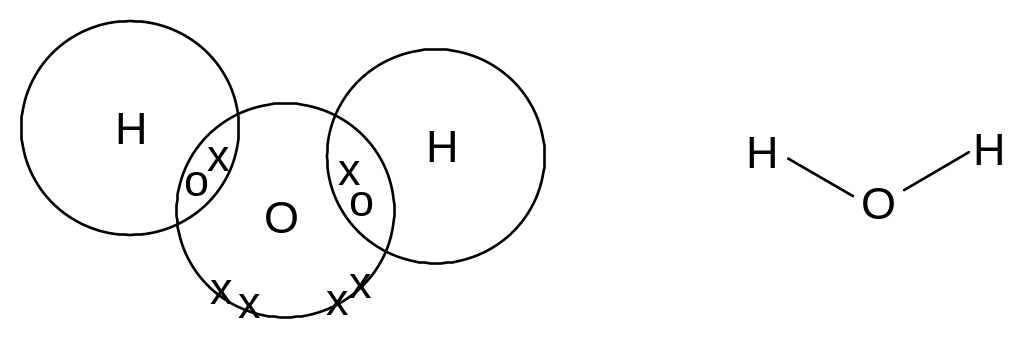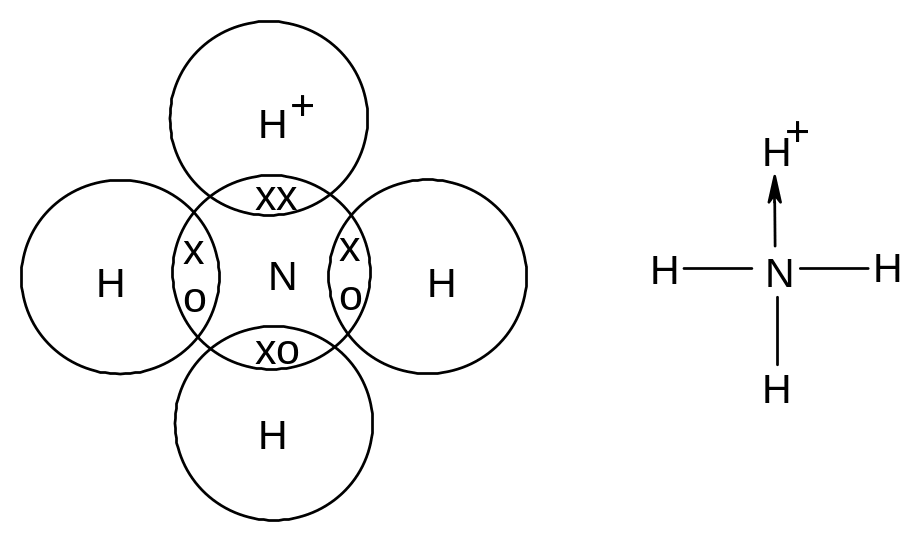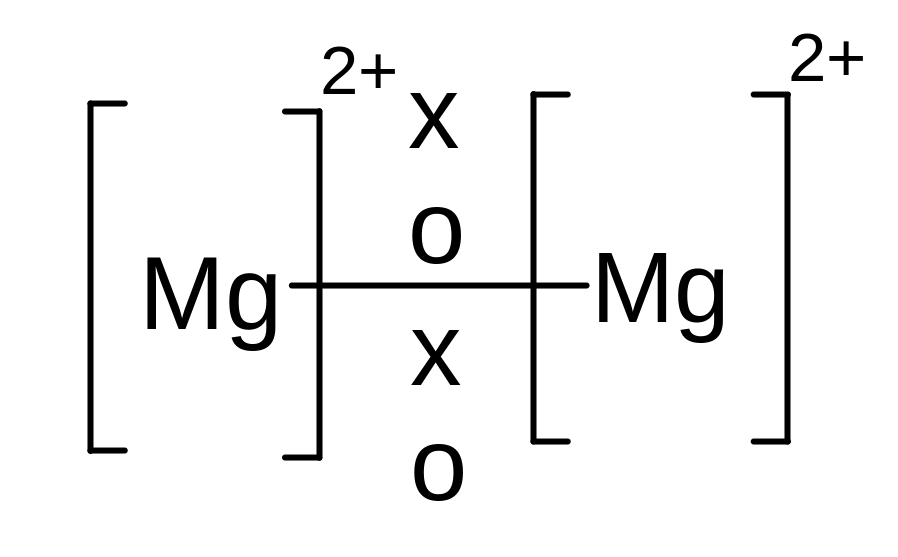
- •Types of bond
- •Ionic or covalent? - electronegativity
- •States of matter
- •Ionic structures Bonding in ionic compounds
- •Metallic structures Bonding in metals
- •Covalent structures
- •Summary of different types of compound and their properties
- •Molecular shapes
- •Summary of molecular shapes
- •Intermolecular forces
Topic 1.3
BONDING
Types of bond States of matter Structure and physical properties Molecular shapes Intermolecular forces
Mill Hill County High School
|
Types of bond
Atoms bond to each other in one of four ways:
ionic bonding
An ionic bond is an attraction between oppositely charged ions, which are formed by the transfer of electrons from one atom to another.
Eg In sodium chloride, each sodium atom transfers an electron to a chlorine atom. The result is a sodium ion and a chloride anion. These two ions attract each other to form a stable compound.

Covalent bonding
A covalent bond is a pair of electrons shared between two atoms.
In a normal covalent bond, each atom provides one of the electrons in the bond. A covalent bond is represented by a short straight line between the two atoms.
Eg water

In a dative covalent bond, one atom provides both electrons to the bond.
A dative covalent bond is a pair of electrons shared between two atoms, one of which provides both electrons to the bond.
A dative covalent bond is represented by a short arrow from the electron providing both electrons to the electron providing neither.
Eg ammonium ion

Covalent bonding happens because the electrons are more stable when attracted to two nuclei than when attracted to only one.
Covalent bonds should not be regarded as shared electron pairs in a fixed position; the electrons are in a state of constant motion and are best regarded more as charge clouds.
iii) Metallic bonding
A metallic bond is an attraction between cations and a sea of electrons.
Metallic bonds are formed when atoms lose electrons and the resulting electrons are attracted to all the resulting cations.
Eg Magnesium atoms lose two electrons each, and the resulting electrons are attracted to all the cations.

Metallic bonding happens because the electrons are attracted to more than one nucleus and hence more stable. The electrons are said to be delocalized – they are not attached to any particular atom but are free to move between the atoms.
Ionic or covalent? - electronegativity
Electronegativity is the relative ability of an atom to attract electrons in a covalent bond.
The electronegativity of an atom depends on its ability to attract electrons and its ability to hold onto electrons. Electronegativity increases across a period as the nuclear charge on the atoms increases but the shielding stays the same, so the electrons are more strongly attracted to the atom. Electronegativity decreases down a group as the number of shells increases, so shielding increases and the electrons are less strongly attracted to the atom.
An atom which has a high electronegativity is said to be electronegative; an atom which does not have a high electronegativity is said to be electropositive.
Electronegativities are relative; electronegativity has no units and is measured on a scale from 0.7 to 4.0. The electronegativities of some elements in the periodic table are shown below:
|
|
|
|
|
|
|
|
|
H |
|
|
|
|
|
|
|
He |
|
|
|
|
|
|
|
|
|
2.1 |
|
|
|
|
|
|
|
|
Li |
Be |
|
|
|
|
|
|
|
|
|
|
B |
C |
N |
O |
F |
Ne |
1.0 |
1.5 |
|
|
|
|
|
|
|
|
|
|
2.0 |
2.5 |
3.0 |
3.5 |
4.0 |
|
Na |
Mg |
|
|
|
|
|
|
|
|
|
|
Al |
Si |
P |
S |
Cl |
Ar |
0.9 |
1.2 |
|
|
|
|
|
|
|
|
|
|
1.5 |
1.8 |
2.1 |
2.5 |
3.0 |
|
K |
Ca |
Sc |
Ti |
V |
Cr |
Mn |
Fe |
Co |
Ni |
Cu |
Zn |
Ga |
Ge |
As |
Se |
Br |
Kr |
0.8 |
1.0 |
1.3 |
1.5 |
1.6 |
1.6 |
1.5 |
1.8 |
1.8 |
1.8 |
1.9 |
1.6 |
1.6 |
1.8 |
2.0 |
2.4 |
2.8 |
|
Note that the noble gases cannot be ascribed an electronegativity since they do not form bonds.
Electronegativity is a very useful concept for predicting whether the bonding between two atoms will be ionic, covalent or metallic.
Consider a covalent bond between two atoms A and B.
![]()
If both atoms have a similar electronegativity, both atoms attract the electrons with similar power and the electrons will remain midway between the two. The bond will thus be covalent - the electrons are shared between the two atoms.
Eg H (2.1) and H (2.1)
![]() a
covalent bond
a
covalent bond
If one atom is significantly more electronegative than the other, it attracts the electrons more strongly than the other and the electrons are on average closer to one atom than the other. The electrons are still shared, but one atom has a slight deficit of electrons and thus a slight positive charge and the other a slight surplus of electrons and thus a slight negative charge. Such a bond is said to be polar covalent.
Eg H (2.1) and O (3.0)
 a
polar covalent bond
a
polar covalent bond
A slight positive charge or negative charge on an atom is represented by a or a symbol respectively.
If the difference between the two atoms is large, then the sharing of electrons is so uneven that the more electronegative atom has virtually sole possession of the electrons. The electrons are, in effect, not shared at all but an electron has essentially between transferred from one atom to the other. The more electropositive atom is positively charged and the more electronegative atom is negatively charged. The bonding is thus ionic.
Eg Na (0.9) and Cl (3.0)
 an
ionic bond
an
ionic bond
If both atoms are electropositive, neither has a great ability to attract electrons and the electrons do not remain localised in the bond at all. They are free to move, both atoms gain a positive charge and the bonding is metallic.
Eg Mg (1.2) and Mg (1.2)
 a metallic bond
a metallic bond
Differences in electronegativity can be used to predict how much ionic or metallic character a covalent bond will have. |
Given suitable electronegativity data, it is thus possible to predict whether a bond between two atoms will be ionic, polar covalent, covalent or metallic.
If both atoms have electronegativities less than 1.6 - 1.9 then the bond is metallic.
If either atom has an electronegativity greater than 1.9 and the difference is less than 0.5 then the bond is covalent.
If either atom has an electronegativity greater than 1.9 and the difference is more than 0.5 but less than 2.1 then the bond is polar covalent.
If the difference is greater than 2.1 then the bond is ionic.
These rules are not perfect and there are notable exceptions; for example the bond between Si (1.8) and Si (1.8) is covalent but the bond between Cu (1.9) and Cu (1.9) is metallic. The bond between Na (0.9) and H (2.1) is ionic but the bond between Si (1.8) and F (4.0) is polar covalent. However as basic giudelines they are very useful provided that their limitations are appreciated.
All bonds are assumed to be covalent in principle: differences in electronegativity can be used to predict how much ionic or metallic character a covalent bond will have. |
Electronegativity differences show that bonds between non-identical atoms are all essentially intermediate in character between ionic and covalent. No bond is completely ionic, and only bonds between identical atoms are completely covalent. |
Bonds between identical atoms cannot be ionic as there is no difference in electronegativity. They will therefore be either covalent or metallic. |
